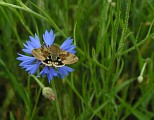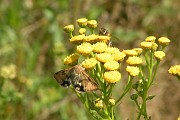
Русские, остановите эту войну! Спасите Свободную Украину!
Russians, stop this war! Save Free Ukraine!
Biodiversity Map
Taxa

Heliothis — subordinate taxa:
Taxon count: 6
-
Heliothis adauctaSet as tree root ↑
Show taxon data → ⚑ → Show taxon data -
Heliothis maritimaSet as tree root ↑
Show taxon data → ⚑ [21] → Show taxon data -
Heliothis nubigeraSet as tree root ↑
Show taxon data → ⚑ → Show taxon data -
Heliothis ononisSet as tree root ↑
Show taxon data → ⚑ [11] → Show taxon data -
Heliothis peltigeraSet as tree root ↑
Show taxon data → ⚑ [5] → Show taxon data -
Heliothis viriplacaSet as tree root ↑
Show taxon data → ⚑ [102] → Show taxon data
[102] → Show taxon data
-
Arthropodaphylum
Click to switch
to select orders
and filters > -
Hexapodasubphylum
Click to switch
to select orders
and filters > -
Insectaclass
Click to switch
to select orders
and filters > -
Lepidopteraorder
Click to set
as the main taxon
and as a base
← of the left panel > -
Noctuoideasuperfamily
Click to set
as the main taxon
and as a base
← of the left panel > -
Noctuidaefamily
Click to set
as the main taxon
and as a base
← of the left panel > -
Heliothinaesubfamily
Click to set
as the main taxon
and as a base
← of the left panel > -
Heliothisgenus
Click to set
as the main taxon
and as a base
← of the left panel >
PL
YES
name status: valid name
BioMap ID: 1204680
taxon code: 2922
taxonomy checked: YES
Data on distribution in Poland

Statistics
- Records: 102
- Publications: 14
- Collections: 7
- Publication authors: 7
- Illustrations (iconography): lacking
- Photos (specimen/observation): 4
Taxon description
Motyl dość rzadki, spotykany częściej na południu kraju i w miejscach o większym nasłonecznieniu. Lata również w ciągu dnia (obserwować go można jak pije nektar kwiatów) w V i VI oraz w drugim pokoleniu w VII i VIII. Gąsienice tego gatunku, żerujące w VII oraz w drugim pokoleniu w VIII i IX na kwiatach i nasionach wielu roślin zielnych (szczaw, podróżnik, bylica, niektóre rośliny baldaszkowe), wykazują skłonności kanibalistyczne. Znane są dwie odmiany barwne: czerwonawa i zielona. Gąsienice w przypadku zaniepokojenia reagują bardzo żywo: uciekają, spadają na ziemię i rzucają ciałem na boki. Przepoczwarczają się w ziemi, gdzie spędzają zimę.
[233: Chloridea viriplaca (Hufnagel 1766) – słonecznica szczeciówka]
[233: Chloridea viriplaca (Hufnagel 1766) – słonecznica szczeciówka]
External data sources
- Ostatnie rekordy
-
1115534
 ⊡
⊡ Noctuidae: Heliothis viriplaca, PL, Podlasie, Nizina Północnopodlaska, Kotlina Biebrzańska, podlaskie, Białystok, Zawady, ad Wizna, UTM FD09, 2019, leg. J. van Holten
Noctuidae: Heliothis viriplaca, PL, Podlasie, Nizina Północnopodlaska, Kotlina Biebrzańska, podlaskie, Białystok, Zawady, ad Wizna, UTM FD09, 2019, leg. J. van Holten -
1041657
 ⊡
⊡ Noctuidae: Heliothis viriplaca, PL, Nizina Mazowiecka, podlaskie, Łomża, Wizna, Zanklewo, UTM EE90, 2016, leg. J. van Holten
Noctuidae: Heliothis viriplaca, PL, Nizina Mazowiecka, podlaskie, Łomża, Wizna, Zanklewo, UTM EE90, 2016, leg. J. van Holten -
1028274
 ×
× Noctuidae: Heliothis viriplaca (Heintze 1990)
Noctuidae: Heliothis viriplaca (Heintze 1990) -
906569
 ×
× Noctuidae: Heliothis viriplaca, PL (Wąsala 2005)
Noctuidae: Heliothis viriplaca, PL (Wąsala 2005) -
906258
 ×
× Noctuidae: Heliothis viriplaca, PL (Nowacki et Wasiluk 2004)
Noctuidae: Heliothis viriplaca, PL (Nowacki et Wasiluk 2004) -
895267
 ×
× Noctuidae: Heliothis viriplaca, PL (Kordy 1997(1996))
Noctuidae: Heliothis viriplaca, PL (Kordy 1997(1996)) -
885403
 ⊡
⊡ Noctuidae: Heliothis viriplaca, PL, Podlasie, Podlasie Środkowe, Łosice, UTM FC18, 1995 (Nowacki et Wasiluk 2004)
Noctuidae: Heliothis viriplaca, PL, Podlasie, Podlasie Środkowe, Łosice, UTM FC18, 1995 (Nowacki et Wasiluk 2004) -
885402
 ⊡
⊡ Noctuidae: Heliothis viriplaca, PL, Podlasie, Podlasie Środkowe, Korczew, UTM FD00, 1995 (Nowacki et Wasiluk 2004)
Noctuidae: Heliothis viriplaca, PL, Podlasie, Podlasie Środkowe, Korczew, UTM FD00, 1995 (Nowacki et Wasiluk 2004) -
885401
 ⊡
⊡ Noctuidae: Heliothis viriplaca, PL, Podlasie, Podlasie Środkowe, Kisielew, UTM FC29, 1995 (Nowacki et Wasiluk 2004)
Noctuidae: Heliothis viriplaca, PL, Podlasie, Podlasie Środkowe, Kisielew, UTM FC29, 1995 (Nowacki et Wasiluk 2004) -
885400
 ⊡
⊡ Noctuidae: Heliothis viriplaca, PL, Podlasie, Podlasie Środkowe, Huszlew, UTM FC27, 1995 (Nowacki et Wasiluk 2004)
Noctuidae: Heliothis viriplaca, PL, Podlasie, Podlasie Środkowe, Huszlew, UTM FC27, 1995 (Nowacki et Wasiluk 2004) - ... more
- Powiązane publikacje
-
Frąckiel K., Nowacki J. 2010. The Noctuids (Lepidoptera, Noctuidae) of Marsh ecosystems In the Biebrza National Park. Fragm. Faun., 7:3-67.
 Show records
Show records -
Nowacki J., Wąsala R. 2006b. Sówki (Lepidoptera: Noctuoidea: Nolidae, Erebidae, Noctuidae) środowisk naskalnych w okolicy Mirowa na Jurze Krakowsko-Czestochowskiej. Wiad. Entomol., 25(2):105-124.
 full text
full text Show records
Show records -
Wąsala R. 2005. Sówkowate (Lepidoptera: Noctuidae) Leśnego Zakładu Doświadczalnego Siemianice. Wiad. Entomol., 24(2):89-111.
 full text
full text Show records
Show records -
Nowacki J., Wasiluk D. 2004. Sówkowate (Lepidoptera, Noctuidae) środkowego Podlasia. Wiad. Entomol., 23(Supl. 1):3-54.
 full text
full text Show records
Show records -
Nowacki J., Hołowiński M. 1999. Sówkowate (Lepidoptera: Noctuidae) Lasów Sobiborskich na obszarze Polskiego Polesia. Wiad. Entomol., 18(Supl. 1):3-60.
 full text
full text Show records
Show records - ... more








